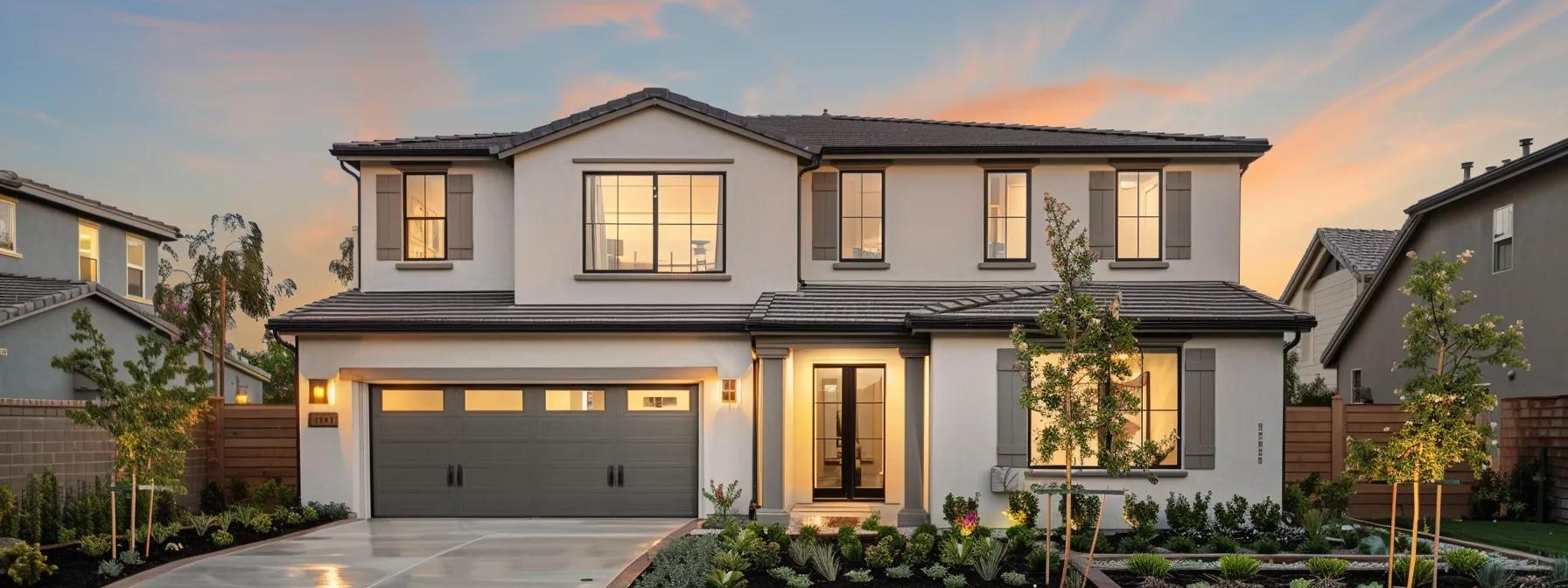
Table Of Contents:
- Expert Insights on Choosing Replacement Windows for Homes
- Evaluate Your Home’s Style Before Choosing Replacement Windows
- Research Various Types of Replacement Windows Available Today
- Prioritize Energy Efficiency When Selecting New Windows
- Set a Realistic Budget for Your Window Replacement Project
- Consult With Experts for Guidance on Window Selection
- Schedule an Installation for Your Chosen Replacement Windows
- Conclusion
- Frequently Asked Questions
Expert Insights on Choosing Replacement Windows for Homes
Replacement windows are a cornerstone of home renovation projects. Whether you are looking to enhance curb appeal, improve energy efficiency, or upgrade your home’s overall aesthetics, choosing the right window replacement is a critical decision that impacts both the comfort and value of your property. In this guide, you will gain expert insights into the key factors to consider, from assessing your current home style to budgeting, consulting experts, and scheduling a flawless installation. You will also find detailed discussions on various window types available in the market, exploring their materials, energy-efficient technologies, and installation complexities. Using a precise window replacement process that involves detailed carpentry considerations, energy star comparisons, and even the nuances of color matching, you will be equipped to navigate through the frequently challenging journey of window replacement.
This article is designed to assist you, a homeowner looking to streamline your replacement project, with actionable advice backed by industry insights and relevant data. As you read through, you will encounter meticulous details on window opening requirements, the role of the jamb, the importance of proper sealing with caulk and spray foam, and how advanced materials like vinyl replacement windows and fiberglass options compare in terms of heat reduction and sound insulation. By following this guide, you can confidently discuss options with your local handyman or window contractor, ensuring that your investment stands the test of time. Let’s begin by evaluating your home’s style and moving onward to research, budgeting, expert consultation, and installation scheduling, all tailored to help you achieve the home improvement results you desire.
Evaluate Your Home’s Style Before Choosing Replacement Windows
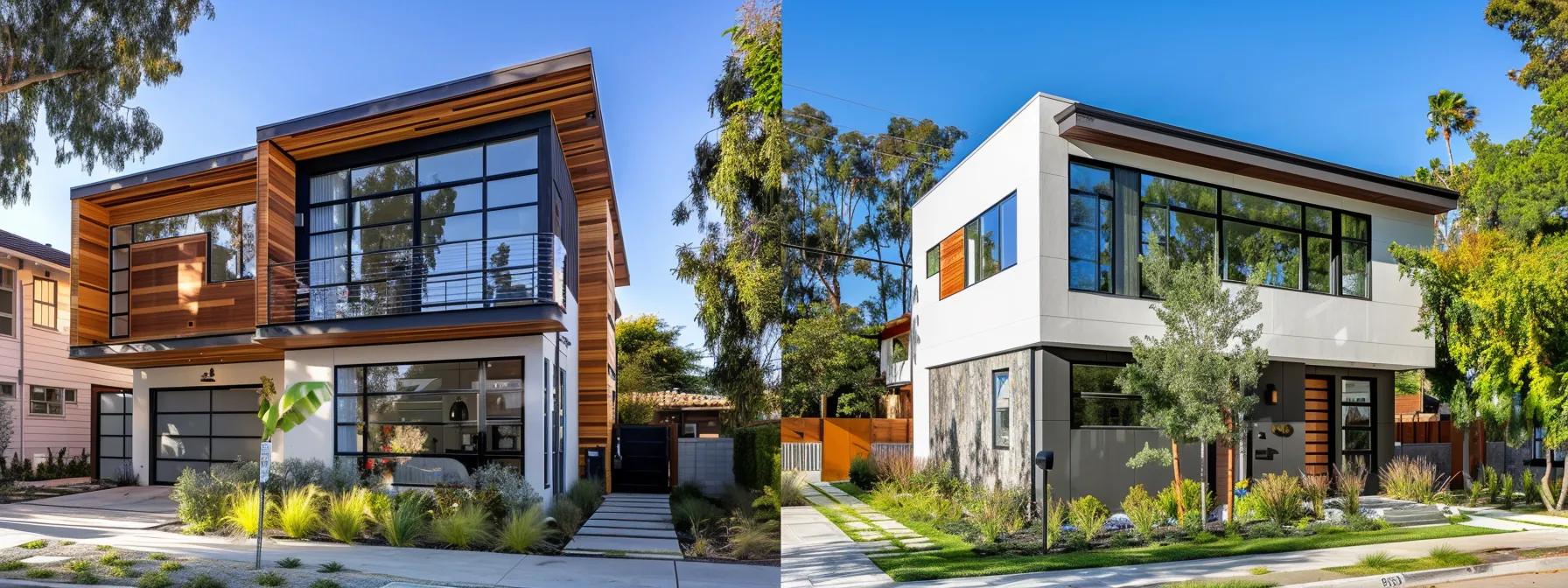
Understanding your home’s style is the essential first step in choosing replacement windows. You need to align new windows with your property’s architectural style, interior design, and regional regulations. Start by analyzing architectural styles to ensure compatibility: if your home features a modern, minimalistic design, you might opt for sleek frames with clean lines, whereas a traditional or colonial home would benefit from more classic window styles with decorative grilles and wood finishes. Compatibility is key, as the wrong window style can disrupt the aesthetic balance of your home.
Next, consider color and finish options to match your aesthetics. The exterior color of your windows should complement both the siding of your home and the trim around the window openings. Many homeowners find that matching the window color with elements like the roof or door frames creates a harmonious look. This decision not only affects visual appeal but also can impact the resale value of your home.
Assess any historical aspects that influence window choices, especially in heritage properties where preservation guidelines may require maintaining certain window configurations or materials. Many older homes have unique features such as divided lights or sash windows, which might require custom fabrication to replicate authentic details while integrating modern energy-efficient technology.
Think about window size and placement for visual appeal. Replacing windows is not only about the design but also about the proportion and balance. Properly sized windows that allow ample light while maintaining privacy are vital for both interior function and curb appeal. Consider the impact of window opening mechanisms on design; for example, sliding windows may offer a contemporary look while providing smooth operability.
Explore energy efficiency in different home styles. Older homes may struggle with opening issues and inefficient insulation. Look for replacement windows that incorporate energy star ratings, low-e coatings, or gas fills that reduce heat loss—and ultimately lower your energy bills. It is paramount to blend aesthetics with performance.
Finally, review local regulations regarding design and appearance. Building codes and homeowner association rules might have strict requirements covering window types, installation methods, and even the materials used. This aspect is especially critical in cities with a high concentration of historic homes.
Key Takeaways: – Analyze your home’s architecture to select window styles that blend naturally with existing elements. – Matching window colors and finishes enhances curb appeal and resale value. – Ensure the chosen windows comply with local regulations and historic preservation guidelines.
Research Various Types of Replacement Windows Available Today
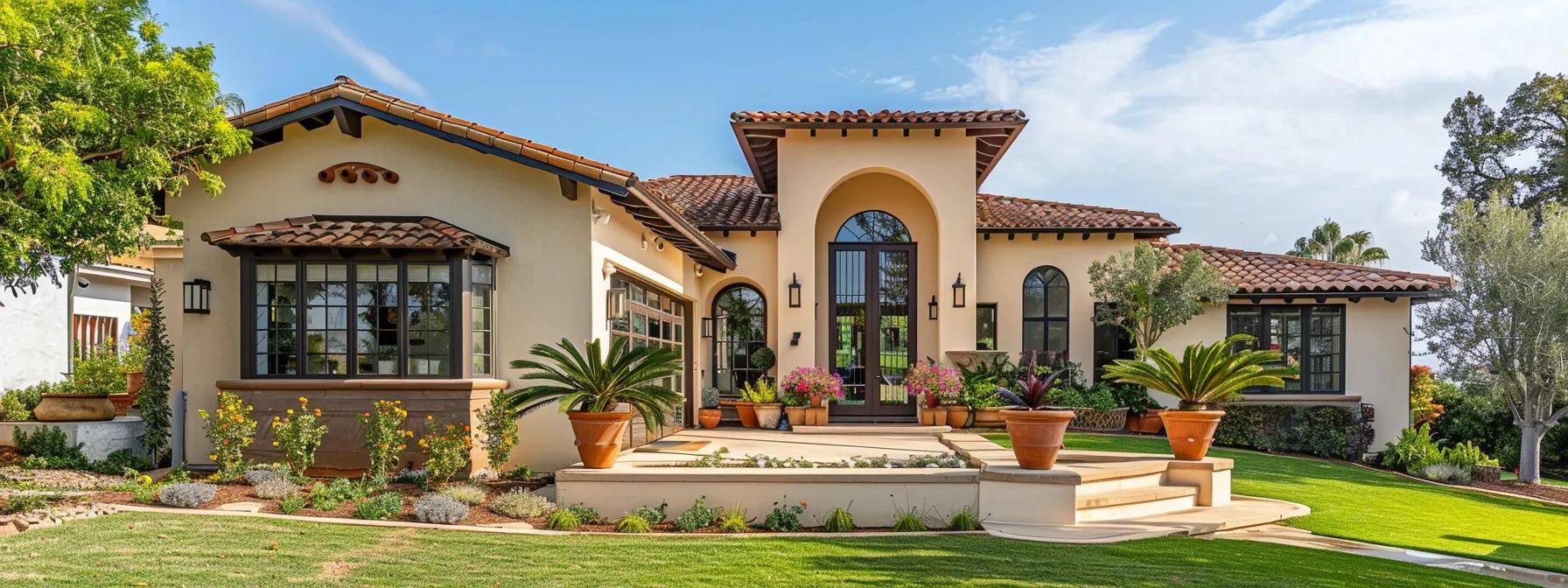
To make an informed decision, research various types of replacement windows available in today’s market. With an array of options including vinyl, wood, aluminum, and fiberglass frames, every used material carries a unique set of benefits that cater to different needs. Start by comparing different frame materials and their benefits. For instance, vinyl replacement windows offer excellent energy efficiency and require minimal maintenance compared to traditional wood windows, which while aesthetically pleasing, need periodic painting and sealing to prevent water damage. Aluminum and fiberglass options provide durability and sleek modern designs, often appealing in both residential and commercial settings.
Investigate energy-efficient window technologies since these not only impact indoor comfort but also translate into long-term energy savings. Many modern replacement windows come with advanced glazing systems—such as double or triple-pane glass fitted with Low-E coatings—to improve insulation and reduce heat gain or loss. These windows can significantly decrease energy costs by preventing heat transfer during both summer and winter months. Look for windows certified by Energy Star to ensure they meet rigorous efficiency standards. Studying independent performance studies can also be beneficial; one such study (Anderson, 2021, https://www.energystar.gov) noted that Energy Star-rated windows reduced energy costs by up to 20% over standard models.
Assess the pros and cons of double-hung versus sliding windows. Double-hung windows are versatile and maintain a classic look suitable for many traditional homes, offering ease of cleaning and ventilation. However, sliding windows might provide a more contemporary appearance and unobstructed views, but they can be more challenging to open if debris accumulates in the track. Each type has particular advantages that should be weighed in the context of your home’s style and functionality needs.
Understand the features of casement and awning windows. Casement windows, which open outward using a crank, can seal tightly when closed and offer excellent ventilation control, making them ideal for homes requiring efficient air circulation. Awning windows, which also open outward but are hinged at the top, can be left open during rain without letting water inside, providing a practical choice for regions with unpredictable weather.
Explore custom window options for unique spaces, especially if your home features unusual dimensions or specific aesthetic requirements. Custom-fabricated windows allow you to tailor sizes, colors, finishes, and operation methods to match your home’s unique requirements. Additionally, some manufacturers offer a wide range of hardware options for enhanced security and style.
Look into storm windows for enhanced protection, particularly if your home is located in areas prone to severe weather events or high winds. Storm windows act as an additional barrier against the elements and can be installed over your primary windows for improved insulation and weather protection.
Key Takeaways: – Research shows that advanced glazing and energy-efficient technologies of modern windows can save up to 20% on energy costs. – Different window types, including double-hung, sliding, casement, and awning, should be evaluated based on home design and functional needs. – Custom window options and storm windows provide solutions for unique spaces and regions with harsh weather conditions.
Prioritize Energy Efficiency When Selecting New Windows
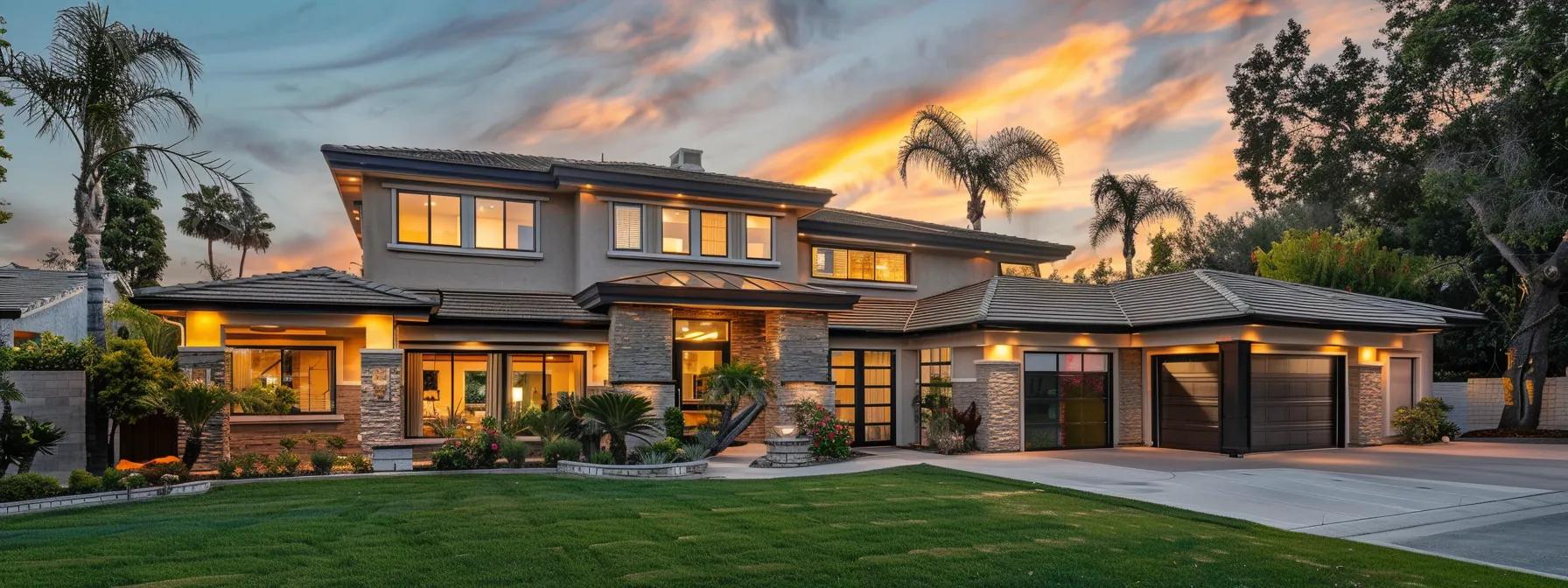
When selecting new windows, prioritizing energy efficiency is crucial to achieve long-term savings and maintain consistent indoor comfort. Begin by researching Energy Star ratings and their significance. Energy Star-rated windows have undergone rigorous testing and must meet criteria that ensure they provide superior insulation compared to standard windows. These ratings indicate that the window has been independently verified to lower energy consumption, thereby reducing utility bills by minimizing heat loss during winter and limiting heat gain in summer.
Understand the impact of Low-E coatings on performance. Low-emissivity or Low-E coatings improve energy efficiency by reflecting infrared light, keeping heat within your home during colder months while keeping the interior cooler in the heat of summer. These coatings can reduce ultraviolet (UV) light transmission, which not only protects your furnishings from fading but also contributes to a more stable indoor temperature. Studies from the National Renewable Energy Laboratory (NREL, 2020, https://www.nrel.gov) highlight that windows with state-of-the-art Low-E coatings can result in a reduction in solar heat gain by up to 30%.
Evaluate insulation technology for optimal temperature control. Insulated frames, double or triple-glazed panes, and inert gas fills like argon or krypton between panes are all key factors that contribute to an effective window replacement. Inadequate insulation can lead to condensation issues and higher energy bills. Advanced insulation technology found in modern replacement windows can enhance thermal performance, ensuring your home maintains a comfortable ambient temperature regardless of exterior conditions.
Assess options for gas fills to reduce heat transfer. Windows that use inert gases such as argon or krypton between panes have better insulation properties because these gases have lower thermal conductivity compared to air. This not only improves energy performance but also enhances comfort by reducing cold drafts near the window surfaces. Research suggests that using argon gas fills can lower the U-factor (a measure of heat transfer) by up to 15% compared to air-filled windows.
Compare the U-Factor and Solar Heat Gain Coefficients among various products. The U-factor measures how well a window prevents heat from escaping, while the Solar Heat Gain Coefficient (SHGC) indicates how much sunlight passes through. Lower values in both metrics are generally desired for superior energy efficiency. By comparing these coefficients, you can ensure that the windows you select will contribute to a more energy-efficient home environment.
Consider how frame materials affect overall efficiency. Materials such as fiberglass or vinyl often provide better insulation than aluminum frames. Fiberglass is known for its strength and low thermal conductivity, which makes it a robust choice for energy-efficient window replacement. Vinyl offers a cost-effective alternative with good thermal performance and minimal maintenance requirements.
Key Takeaways: – Energy Star ratings and Low-E coatings are essential markers of an energy-efficient window. – Advanced insulation techniques and gas fills, such as argon, can lower the U-Factor by up to 15%. – Comparing metrics like U-Factor and SHGC helps in selecting windows that optimize energy performance and comfort.
Set a Realistic Budget for Your Window Replacement Project
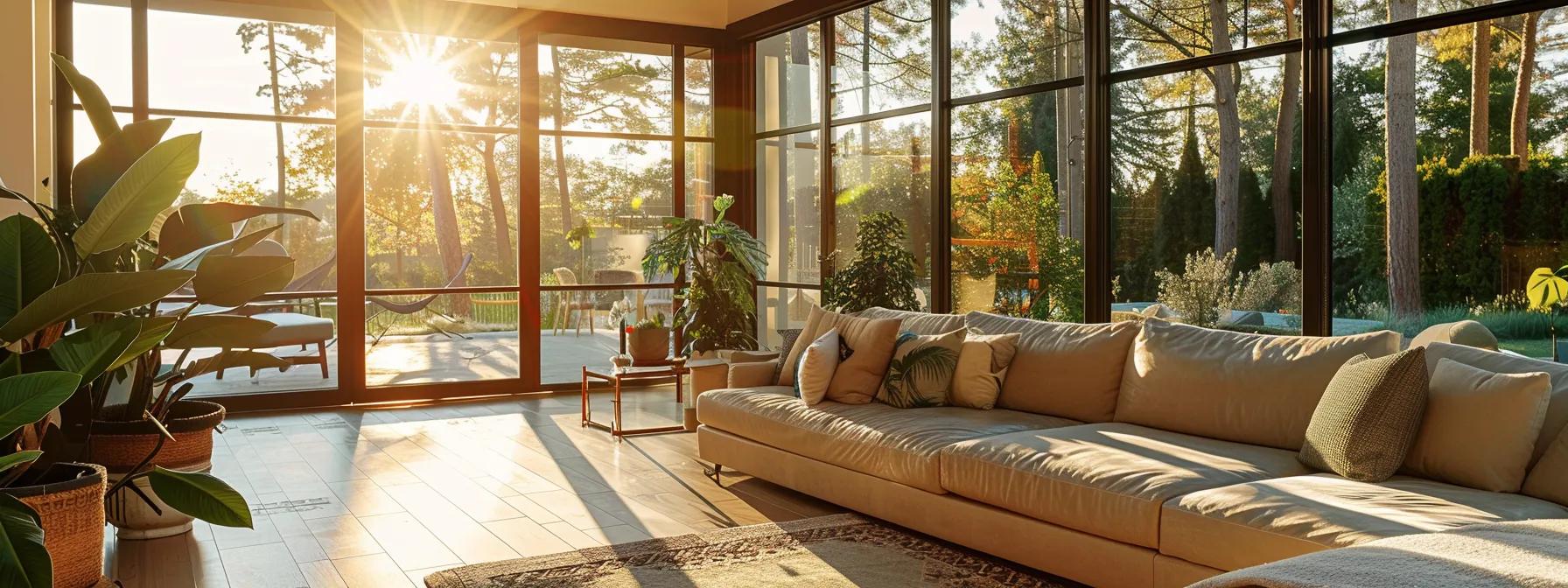
Setting a realistic budget is indispensable for any window replacement project. First, analyze costs for different window types and materials. Factors such as frame material, glass quality, and window style have a direct impact on the overall pricing. For instance, vinyl replacement windows generally offer the best balance between cost and energy efficiency, while wood windows, though aesthetically appealing, may cost significantly more over time due to maintenance requirements. Keeping a detailed record of each option and comparing their benefits will help you identify the most cost-effective solution in line with your aesthetic and functional needs.
Factor in installation expenses when budgeting. Labor costs can vary widely depending on the complexity of the installation process, the quality of the contractor, and regional pricing variances. Professional installation is critical to ensure that the window replacement process is completed with precision, which in turn will affect your home’s insulation performance. Always remember that a proper installation can prevent issues such as air leaks, water infiltration, and structural damage that might result in costly repairs later.
Research potential energy savings over time. Energy-efficient windows can reduce heating and cooling expenses significantly. Several studies indicate that upgrading to replacement windows with advanced insulation can cut energy bills by 10% to 20% annually. By calculating the return on investment over the lifespan of the windows, you can justify initial higher costs with long-term savings. This analysis should include both the immediate cost of the window along with the projected energy savings seen on your utility bills.
Look for financing options or rebates available. Many local governments, utility companies, and even window manufacturers offer rebates or incentives for installing energy-efficient windows. These incentives can sometimes offset the initial cost by a considerable percentage, making them attractive to homeowners seeking to upgrade without a large upfront expense. Contacting your Energy Star certified contractor or local utility provider may reveal additional financial programs or tax credits.
Assess the long-term value of your window choices. While it can be tempting to opt for the lowest cost option, it is important to consider factors such as durability, warranty, and maintenance costs over the lifetime of the windows. A well-installed, energy-efficient window not only improves the environment but also enhances the value of your home. The cost savings on energy bills and the increased curb appeal contribute to a higher resale value.
Create a plan for unexpected costs during the project. Any home improvement project can encounter unforeseen expenses, from additional structural work required for window framing to upgrades needed to meet local building codes. Setting aside a contingency fund of 10-15% of your total budget is a prudent measure that can help you manage any unexpected financial burdens without derailing your project.
Key Takeaways: – Detailed cost analysis of materials and installation is essential for setting a realistic budget. – Energy savings and available rebates can significantly offset initial costs. – Always include a contingency fund to manage unforeseen expenses during the project.
Consult With Experts for Guidance on Window Selection
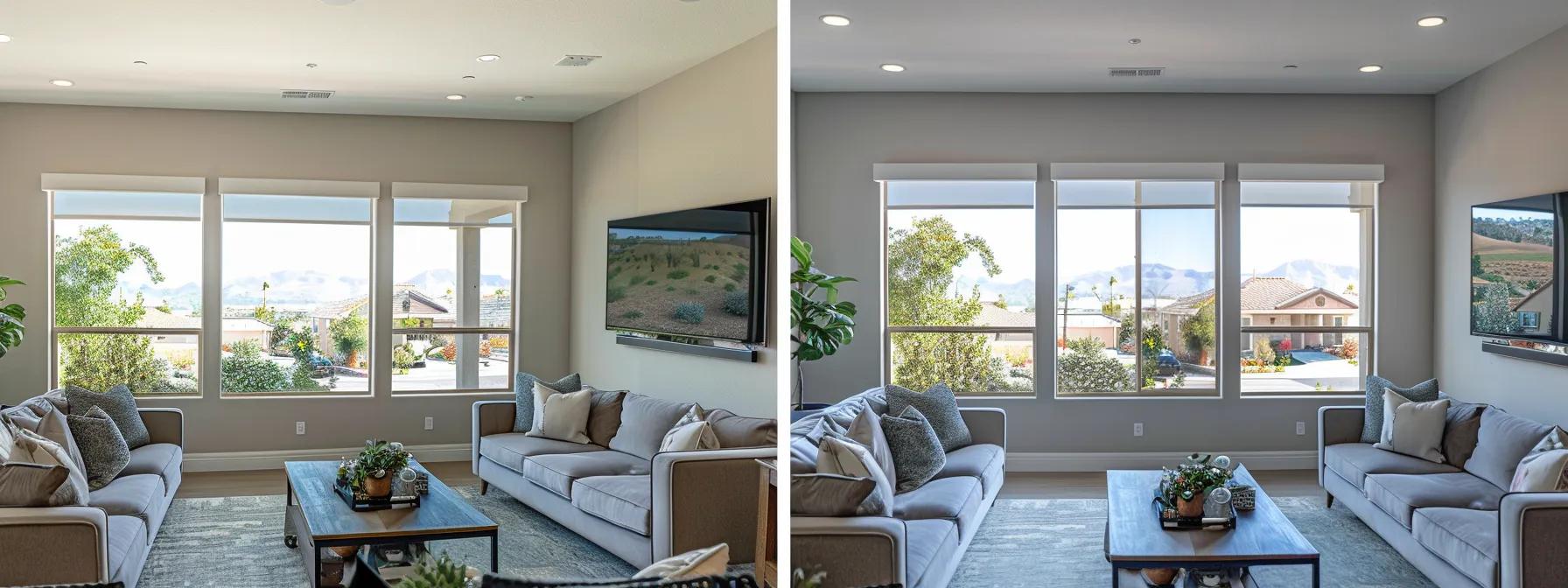
Consulting with experts is crucial when you plan to replace your windows, as their guidance can help you avoid common pitfalls and ensure a seamless process. Start by identifying reliable window consultants or contractors who have a proven track record. Look for professionals with strong customer testimonials, certifications, and years of experience in both design consultation and installation. These experts can provide tailored advice on the best window types for your home’s style, climate considerations, and specific performance needs.
Request quotes and detailed proposals from multiple vendors to compare service offerings and pricing. Detailed proposals should include specifications on window materials, energy efficiency ratings, installation costs, and warranty coverage. Experts are invaluable because they are familiar with the practical challenges of window replacement, including potential issues related to window opening, jamb alignment, and integration with existing structures. Their proposals often include a timeline for the entire project which gives you a clear roadmap from design to installation.
Seek advice on local climate considerations for windows. Regional weather patterns play a significant role in determining the type of windows that work best. For example, in areas with high humidity or heavy rainfall, water-resistant materials and advanced sealing technologies—such as spray foam insulation or high-quality putty—are critical. Experts can recommend window products with proven performance in your area, ensuring that you stay comfortable and that your installation meets local building regulations.
Discuss warranty options and what they cover. A strong warranty is a sign of quality and long-term support from the manufacturer and installer. Your expert consultant should walk you through the warranty details, including coverage for glass breakage, seal failure, and even the longevity of energy-efficient features such as Low-E coatings. A reputable contractor will stand by their installation work and the products used, which can give you peace of mind for years to come.
Review customer feedback about installers and products. Online review platforms, referrals from friends, and case studies provided by the consultants offer valuable insights into the reliability, professionalism, and overall quality of work delivered by a particular expert or company. Look for consistency in high ratings as well as detailed accounts of service quality.
Learn about maintenance requirements for different options. Different window materials and designs come with varied upkeep demands. For instance, wood windows might require periodic repainting and sealing, while vinyl or fiberglass windows typically need minimal maintenance. An expert’s advice can help you choose a product that fits within your lifestyle, saving you time and additional costs in the future.
Key Takeaways: – Engage multiple vendors to obtain detailed quotes and compare service quality. – Expert advice on local climate considerations and maintenance can guide you to a more suitable product. – A comprehensive warranty and positive customer feedback are key indicators of reliable window replacement services.
Schedule an Installation for Your Chosen Replacement Windows
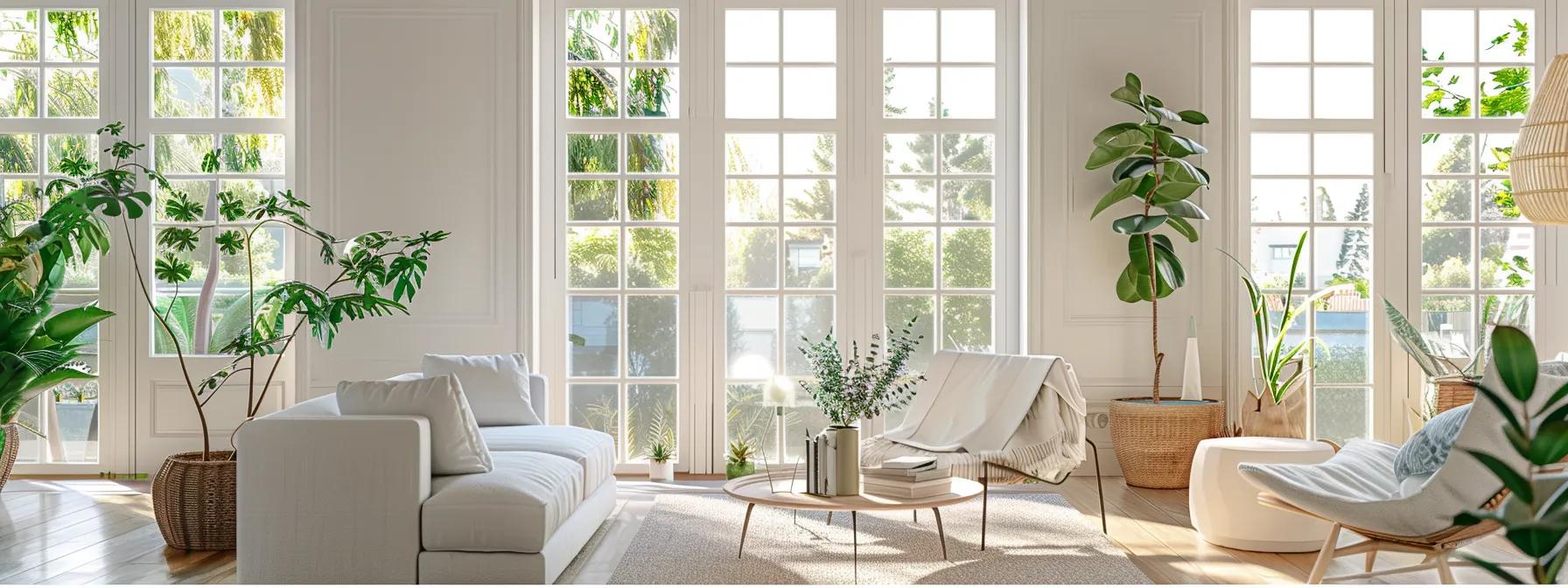
Scheduling the installation is the final yet critical stage of the window replacement process. It is important to ensure that the installation crew is well-prepared to carry out precision-focused work on the day of installation, minimizing disruption in your home. Start by coordinating timing for installation to reduce disruption. Planning your project timeline during periods when you are less likely to be at home, or when you can manage temporary inconveniences, can be beneficial. Professional installers typically provide a detailed schedule that outlines each stage of the process, from pre-installation measurements to the final cleanup.
Ensure proper measurements are taken for accuracy. Expert installers will verify the height, width, and depth of your current window openings to ensure that the new windows fit precisely. Even slight discrepancies can lead to issues like air leaks, water seepage, or improper sealing. Advanced tools such as laser measuring devices and high-quality tape measures are often employed for these purposes to guarantee precision. Detailed pre-installation checks also include assessing the jamb, framing, and surrounding structure to prevent complications during the installation.
Review the installation process with your contractor. Before the scheduled installation day, clarify every step of the process with the installer. This discussion should cover the removal of existing windows, handling of lead paint (if applicable), managing debris, and the application of new materials such as caulk, spray foam, or putty for sealing and insulation. Understanding each step will help you set realistic expectations and prepare your home accordingly.
Prepare your home for the installation day. This may involve clearing the area around the windows, covering furniture, and ensuring that pets and children are safely away from work zones. Pre-installation preparations can significantly reduce the overall time required and minimize potential hazards. Professional contractors often provide a checklist of tasks for homeowners to complete before the installation begins, ensuring that the installation crew can work efficiently and without interruption.
Understand post-installation care and maintenance. Once the windows are installed, proper care is essential to maintain their performance and appearance. Your contractor should provide guidelines on cleaning, periodic inspections, and timely repairs if necessary. Knowing how to care for your new windows will help prolong their lifespan and ensure they continue to provide optimal energy efficiency.
Finally, confirm final inspections to guarantee quality work. Once the installation is complete, a thorough inspection should be conducted by both the contractor and you, the homeowner. This final check is crucial to ensure that every window is properly sealed, aligned, and functioning as expected. Address any discrepancies immediately to avoid future issues.
Key Takeaways: – Coordinate your installation schedule to ensure minimal disruption and optimal timing. – Accurate measurements and clear communication with your contractor are fundamental to a successful installation. – Post-installation care and final inspections ensure long-term window performance and energy efficiency.
Conclusion
In conclusion, choosing replacement windows for your home involves a series of well-defined steps, starting with understanding your home’s style and moving through rigorous research, budgeting, expert consultation, and efficient scheduling of the installation. By carefully analyzing aspects such as architectural compatibility, energy efficiency, and local regulations, you can ensure that the windows not only enhance your home’s aesthetics but also contribute to long-term savings on energy costs. Expert advice coupled with meticulous planning paves the way for a smooth replacement process that addresses potential issues like improper sealing or mismatched materials.
Taking the time to compare various window types, consult reliable professionals, and prepare your home for installation results in a durable, energy-efficient solution that elevates your living environment. Ultimately, this thoughtful approach increases your home’s value and comfort while minimizing future maintenance and replacement hassles. Take charge of your window replacement project today and schedule an in-home consultation to explore the best options available.
Frequently Asked Questions
Q: How do I know which window style best suits my home?
A: Begin by evaluating your home’s architectural style, color schemes, and historical elements. Matching the new window design to your home’s existing features ensures synergy in aesthetics and functionality. If you have a modern home, consider sleek, minimalist designs; for traditional homes, opt for classic styles with decorative grilles.
Q: What are the benefits of Energy Star-rated windows?
A: Energy Star-rated windows provide higher levels of insulation, which can reduce energy consumption by keeping your home warmer in winter and cooler in summer. This results in lower utility bills and enhanced indoor comfort, as well as environmental benefits from decreased energy use.
Q: Are custom replacement windows worth the extra cost?
A: Custom replacement windows allow you to match your specific window opening dimensions, design aesthetics, and performance requirements. Though they may have a higher initial cost, they often provide better long-term benefits such as improved energy efficiency, enhanced durability, and increased resale value for your home.
Q: How important is professional installation for new windows?
A: Professional installation ensures that windows fit perfectly and function efficiently. Experts measure accurately, handle complex removal and installation processes, and guarantee proper sealing to prevent air and water leaks. Correct installation maximizes the windows’ energy efficiency and lifespan.
Q: What maintenance should I perform on my new windows?
A: Regular cleaning, periodic inspections for seal integrity, and prompt repairs of any detected issues are essential. Maintenance guidelines vary by material—vinyl and fiberglass require minimal upkeep, while wood may need more frequent sealing and painting. Following manufacturer recommendations will extend the windows’ performance.
